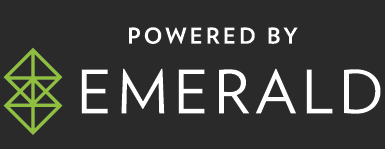By Sam Wilson, VP, SpringServe, EMEA at Magnite
Connected TV (CTV) continues to attract brand investment and consumer attention, with the IAB UK forecasting that CTV ad spend could reach £2.94 billion by 2028. However, despite this growing popularity, advertisers are under increasing pressure to ensure their programmatic CTV strategies are efficient, effective and transparent. With demand for premium inventory growing, Supply Path Optimisation (SPO) is becoming an essential tool for brands seeking to maximise value.
Once considered a backend efficiency tool, SPO is now being redefined as a strategic lever in high-growth channels such as CTV, where quality, viewability and accountability matter more than ever. As the programmatic landscape matures, SPO empowers brands to make smarter, more direct decisions that improve outcomes across the board.
But in a fragmented ecosystem, how can advertisers ensure they’re prioritising performance and not just price?
The case for SPO
In media planning terms, SPO essentially means consolidating buying power within a select few supply partners that offer the most transparent and efficient access to the inventory that’s important to their businesses. An added benefit of SPO in practice is that minimising hops between the buyer and seller also helps reduce the carbon footprint generated by a transaction.
Working with trusted partners and using technology platforms that offer holistic supply path visibility and reporting is not only good SPO practice; it will also support you in achieving your wider business goals.
Aligning SPO efforts with long-term business goals
Better supply paths lead to improved performance and can positively impact reach and scale, which are key priorities for advertisers. In addition, as brand safety moves up the priority list for buyers, the added control and transparency that SPO can provide helps ensure brand messages appear in the right environments. This, in turn, improves audience targeting accuracy while reducing waste by improving data signal integrity through cleaner paths.
SPO also supports clear attribution and outcome-driven KPIs, achieving better measurement and accountability for the long term.
Three-step process
Below is a three-step approach for buyers looking to forge the most effective path to premium supply and drive higher ROAs.
1. Consolidate sell-side partners
Determine the criteria for your ideal CTV supply partners. Your criteria could focus on access to exclusive publishers, omnichannel scale, fee transparency, buyer services, or the benchmarks of your choosing. Identify three to four key partners that meet this criteria, then gradually cut ties with low-value, low-quality, or small-scale partners that aren’t as good a fit.
By slowly whittling and monitoring KPIs as you do so, you can better track how each modification affects campaign results and revenue.
Once your preferred sell-side partners are established, enforce this selection by setting demand-side platform (DSP) defaults at the campaign or seat level. Make sure these updates are adopted across your team to ensure alignment and achieve maximum results.
2. Allocate budgets
Spend your budget on performant supply and your most strategic business partners. Track KPIs such as CPM, win and bid rate, viewability, and conversion rate to assess performance. Allocate budgets toward platforms that amplify outcomes by thinking short-term as well as long-term. What are the KPIs you need to hit this quarter? What kind of reach, engagement, and revenue do you want to achieve long-term, and what platforms unlock those key numbers?
3. Craft supply strategy
Differentiate yourself as a buyer by getting as close as possible to key sources with access to exclusive, premium supply. Curate the open market with scaled pools of brand-safe supply using auction packages. Build out a deal library with specialised deals (such as Programmatic Guaranteed, PMP, etc.) that are specific to your business.
Mitigate supply path concerns like multi-hop reselling and made-for-advertising (MFA) while prioritising your media towards premium publisher-controlled supply.
Forward with SPO
In conclusion, remember that SPO is an ongoing process – you’ll want to regularly review performance metrics, adjust bids and budgets based on performance, and test new inventory sources and partners.
Creating more transparency in supply paths with CTV brands can improve the quality and impact of their media investments, while driving performance and supporting long-term business growth. Even though SPO may require more planning and testing than traditional programmatic methods, experienced partners can assist in making the process more manageable. Ultimately, the effort is definitely worth it, enabling advertisers to reach their target audiences in a simpler, more sustainable and higher-performing way.
If your brand is planning to increase its spending on CTV advertising, it’s time to reassess your current supply path strategies, align with trusted partners, and embrace SPO as a future-proofing mechanism for your CTV investments.











